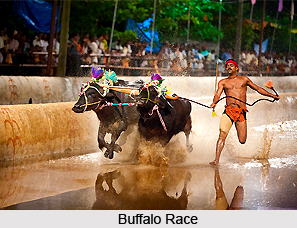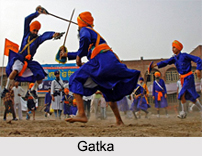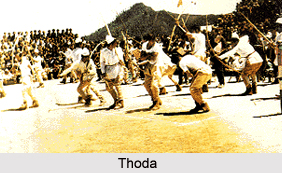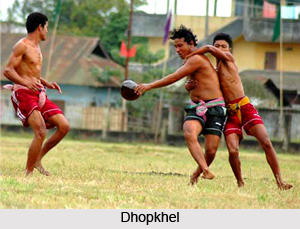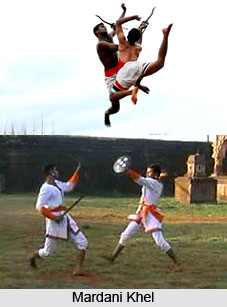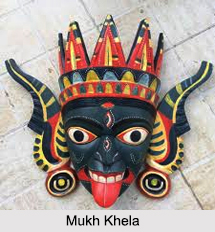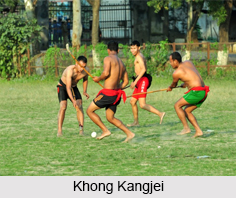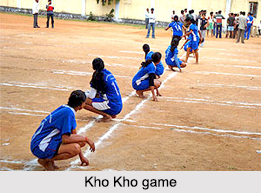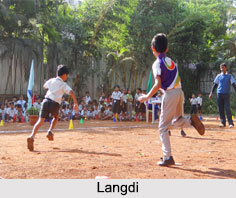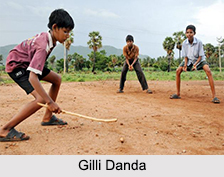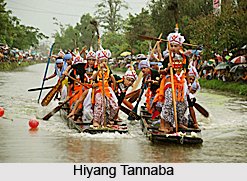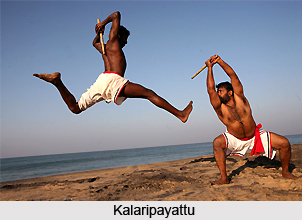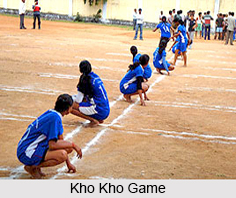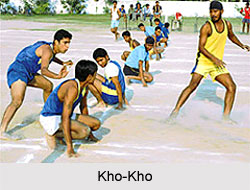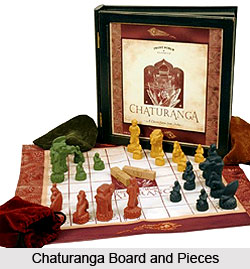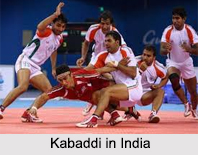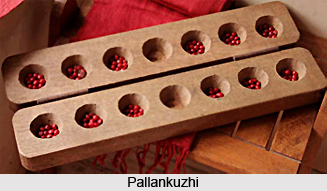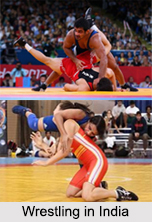 Wrestling in India is the most ancient sports whose past is enriched with glory. Wrestling in modern India is concentrated in the Indian states like Uttar Pradesh, Tamil Nadu, Punjab and Haryana. The game of wrestling is considered to be one of the most significant games in the Olympics and was included in 708 BC at the Olympics. Sakshi Malik, Sushil Kumar Solanki, Udey Chand, Satender Dagar, Gobar Guha, Jatindra Charan Goho, Ambika Charan Guha, Khashaba Dadasaheb Jadhav, Yogeshwar Dutt, Ghulam Muhammad, Dara Singh and Geeta Phogat are considered as the all time famous and popular wrestlers in India.
Wrestling in India is the most ancient sports whose past is enriched with glory. Wrestling in modern India is concentrated in the Indian states like Uttar Pradesh, Tamil Nadu, Punjab and Haryana. The game of wrestling is considered to be one of the most significant games in the Olympics and was included in 708 BC at the Olympics. Sakshi Malik, Sushil Kumar Solanki, Udey Chand, Satender Dagar, Gobar Guha, Jatindra Charan Goho, Ambika Charan Guha, Khashaba Dadasaheb Jadhav, Yogeshwar Dutt, Ghulam Muhammad, Dara Singh and Geeta Phogat are considered as the all time famous and popular wrestlers in India.
History of Wrestling in India
In India, wrestling is also known as "Malla-Yudhha". Some forms of Malla-Yuddha were practiced in India even before the invasion of the Aryans. The famous Indian epic, Mahabharata has numerous references of the game of wrestling in the country. Bhima, an important character in Mahabharata is believed to be a great wrestler. Karna, Jarasandha and Duryodhana were the other great wrestlers mentioned in this epic. Ramayana has also asserted about the activity of wrestling and Hanuman has been described as a talented wrestler here.
Wrestling in India, during the ancient times, used to get regular patronage from the emperors and kings of the nation. During the British rule, wrestling in India got another big push, as the British rulers included the game into the military practise. Wrestling in India continued to increase its popularity till the modern days and India was considered among the top 10 countries in wrestling till the 1960s. India also hosted the World Wrestling Championship in New Delhi in 1967.
Types of Wrestling in India
Wrestling in India can be divided into two main categories like "Malla Krida" and "Malla-Yuddha". While Malla Krida is the sports form of the game, Malla-Yuddha is the battle version of wrestling. There are also some other forms of wrestling in India, out of which, the free-style varieties are more common than the other forms, since Vedic times. The free-style varieties of wrestling in India are known as "Pushti" or "Kushti". Wrestling in India can also be divided into four types like "Bhimaseni", "Hanumanthi", "Jambuvanthi" and "Jarasandhi", based on the technique and methodology.
Based on the methods of selecting the winner, wrestling in India can also be divided into another two categories like the "Orthia" and the "Kato Pale". In Orthia type, the wrestler has to throw the opponent on the ground for three times consecutively to win the match. The Kato Pale type of wrestling demands the wrestler to accept defeat by raising his right hand with the index finger pointed. However, the rules of wrestling in India vary according to the various regions of the country.
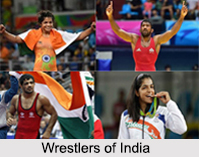 Wrestlers of India
Wrestlers of India
Wrestling in India has witnessed the rising of several eminent wrestlers, so far. The legendary Indian wrestler, Karim Bux became the first wrestler to defeat Tom Canon of England in 1892. Another eminent Indian wrestler, Gobar Guha became the World Champion in Wrestling in San Francisco in 1922, by defeating the hook wrestler Ad Santel. The renowned Indian freestyle wrestler, Khashaba Dadasaheb Jadav won bronze medal in the 1952 Olympic Games. Another eminent Indian wrestler was Salwinder Singh Shinda, who won the Chandigarh Kesari Award, four times. Some of the other legendary wrestlers in India include Kikkar Singh, Gulam, Rajeev Tomar, and Arjuna Awardees in wrestling like Anuj Chaudhury and Malkit Singh Kanjli.
Apart from them, in the recent years, wrestling in India is witnessing the rise of some wrestlers. The famous Indian wrestler, Sushil Kumar has won Bronze medal in the 2008 Beijing Olympic Games. Apart from the conventional way of wrestling, there is also another type of wrestling in India which has earned significant popularity, nowadays. This is called as sports entertainment and the World Wrestling Entertainment (WWE) and TNA are two of the most popular events in this form of wrestling. Some Indian wrestlers have become successful in this form of wrestling. The wrestlers include, Sonjay Dutt (TNA), Dalip Singh (the Great Khali of WWE), Dara Singh, Tiger Jeet Singh and many more.
Wrestling Tournament Records in India
India has seen remarkable achievements in the sport of wrestling, as evidenced by its impressive tournament records. At the Olympic Games, Indian wrestlers have secured two silver and five bronze medals, making a total of seven podium finishes. Even more impressive is their performance at the World Championship, where they have won one gold, five silver, and an astounding 16 bronze medals, totaling 22 medals overall.
The Asian Games have been a fruitful ground for Indian wrestlers, as they have bagged an impressive 11 gold, 14 silver, and 34 bronze medals, amounting to a remarkable total of 59 medals. The dominance of Indian wrestlers in the Asian Championship is truly noteworthy, as they have won a staggering 24 gold, 75 silver, and 122 bronze medals, taking their total medal tally to an impressive 221. Additionally, at the Commonwealth Games, Indian wrestlers have been exceptional, securing 49 gold, 39 silver, and 26 bronze medals, with a total of 114 podium finishes.
In total, India`s wrestling contingent has amassed a remarkable 85 gold, 135 silver, and 203 bronze medals, proudly reaching a total of 423 medals across various prestigious tournaments. These records not only highlight the prowess of Indian wrestlers but also showcase the nation`s growing prominence on the global wrestling stage.
Wrestling Federation of India
Wrestling in India is being managed by several associations, at the state and national level. The national body for wrestling in India, the Wrestling Federation of India (WFI) came into existence in 1967 and it has been promoting the game in India, since then. Apart from that, there is also several state level wrestling associations which are working in collaboration with the WFI for the management of wrestling in India. The associations present many awards and wrestling titles to the Indian wrestlers. Some of the most prestigious wrestling titles include the `Rustam-i-Hind` that means Wrestling Champion of India, the `Rustam-e-Punjab`, the `Rustam-i-Zamana`, and the `Bharat-Kesri` that is given to the Best Heavyweight Wrestler of India.
Pro Wrestling League (PWL)
Pro Wrestling League (PWL) is a strong and developmental initiative of Pro Sportify owned by Kartikeya Sharma and Wrestling Federation of India. This competition is monitored and managed like Indian Super League and Indian Premier League in football and cricket respectively.
Equipments Used in Wrestling
There is a list of equipments used in wrestling in India:
Mat: A mat having a diameter of 9 metres and surrounded by a border of the same thickness between 1.20 and 1.50 m wide is required in all contests. A circle must be traced in the middle of the mat with a diameter of 1m and a surrounding band of 10 cm width.
Dress: The contestants must present themselves at the edge of the mat in a one piece costume with a colour assigned to them (red or blue). Light knee pads and suitable sports shoes may be worn. These shoes must be worn on the mat only.
Wrestling was utilized in the ancient periods as a means to stay naturally healthy. It was also used as a great way of military exercise without any weapons. This game is also termed as "Dangal" and forms a crucial part of wrestling tournament.
